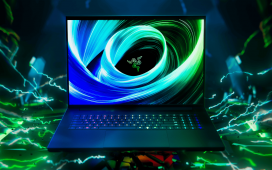Since Artificial Intelligence took over smartphone development, hardly do you hear of a mid-ranger having on-device generative assistants, real-time transcription, or high-end camera processing. Those features almost always debut on flagships, but it’s one thing MediaTek wants to resolve.
The Taiwanese chipset maker recently announced the MediaTek 7400, 7400X, and 6400 processors meant to target the mid-range and upper-mid-range smartphones. Here’s everything they introduce for future phones.
Dimensity 7400 series introduces flagship performance on mid-range phones
The new MediaTek Dimensity 7400 and 7400X processors come with MediaTek’s own NPU 6.0. The Neural Processing Unit is supposedly 15% faster than previous chip versions. The chips will appear on gaming and intelligent camera phones where resource demand is high.
More specifically, the 7400X variant is optimized for flip phones with dual displays. Usually, they need extra power and efficiency to handle two screens at once. With this release, we should see every gamer’s wish of low lag, high frame rates, and long battery life come true. If you also pride yourself in being a mobile photographer, you’ll benefit from quicker image processing and take better pictures.
With our Dimensity 7400 and Dimensity 6400 chipsets, MediaTek is proving once again that it has the capability to bring incredible smartphone experience to more affordable price ranges. Whether gaming, using the latest Al applications, or taking photos and videos, users can enjoy the significant performance and impressive energy efficiency that they have come to expect from the Dimensity family
Dr. Yenchi Lee, General Manager of MediaTek Wireless Communications Business.


Both of them are 8-core processors that use four powerful Cortex-A78 cores running up to 2.6GHz, four Cortex-A55 cores at 2.0GHz, and an Arm Mali-G615 MC2 GPU. They are built on TSMC’s 4nm process, and consume 14-36% less power compared to previous chips.
There’s also a 5G R16 modem on the chip that supports 3CC carrier aggregation (3CC-CA). The 5G network is fast enough as it is, but spotty coverage is a known issue in some locations. On any phone with this feature, you can pull data from three different 5G bands at once and have a more stable connection.
Related: MediaTek Shows Off New Chipsets to Power the Home at CES 2025
The MediaTek 6400 chipset is more of an affordable solution with an octa-core CPU and an Arm Mali-G57 MC2 GPU to match. It has two high-performing Arm Cortex-A76 cores running at 2.5GHz, while the six other Cortex-A55 cores at 2.0GHz handle background processes to conserve battery.
Among its key features is MediaTek’s Bluetooth Wi-Fi HyperCoex Technology. It reduces the common experience of in-game lag and audio delays that often happen when both Wi-Fi and Bluetooth signals interfere with each other.
It’s too early to speculate which phones will carry it under the hood. But Xiaomi, Realme, Meizu and other brands are known MediaTek partners. MediaTek hasn’t called any names yet, but they did say that the first phones will arrive in the first quarter of 2025. We’re already halfway through it, so it shouldn’t be long before we start seeing official announcements.









